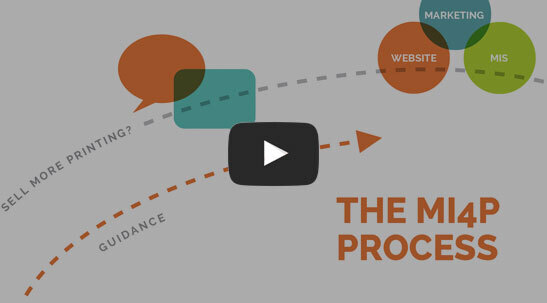Navigating the Challenges of Online Print Services: Competing with and Differentiating from Online Print Giants

Diving into the online print market is no walk in the park. Giants like Vistaprint and Shutterfly dominate the scene with their vast offerings and savvy marketing, setting a towering standard for smaller printing companies aiming to establish their spot in the market. Yet, there’s room for the David’s in this Goliath’s world. Smaller print businesses can carve out their
Is Your Print Company’s Branding Stale? 12 Questions to Ask Yourself

As a print company owner, you know the importance of branding. It helps your business stand out in a crowded market and creates a lasting impression on potential customers. However, as time goes by, it’s possible for your branding to become stale or outdated. This can have a negative impact on your business and hinder its growth. If you are
3 Steps to Crafting A Marketing Message Your Ideal Buyers Will Love (Part 1: Who)

Messaging is everything. It drives your entire business, should be crafted synonymously with your core values, and built around a clear, compelling reason why your prospects should want to do business with you. Yet, the majority of printers have no core messaging, and no relevant message strategy (other than to sell something somebody wants). So, how do you craft content
A New DesignEdit is Almost Here!

There’s a new DesignEdit in the works, and you’re gonna love it! What’s DesignEdit? DesignEdit is an online design tool available on websites from Marketing Ideas For Printers. It offers your prospects and customers the ability to create ready-to-print online design projects starting with either a blank canvas or from one of 20,000+ pre-built templates. From changing colors to cropping images, your website visitors
Drum Up Repeat Business With the Printer@Work Email Newsletter

If the toughest part of business is landing that new customer, the second toughest part is getting them to come back! The innovative Printer@Work email newsletter helps you sell more printing by generating that much-needed repeat business, with style! This time-tested feature has been a part of our websites for more than 12 years, with more than 300 publications produced.





